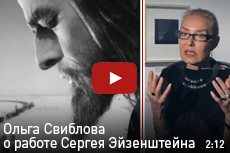Montage of attractions
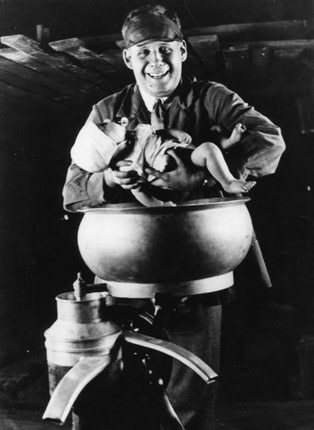
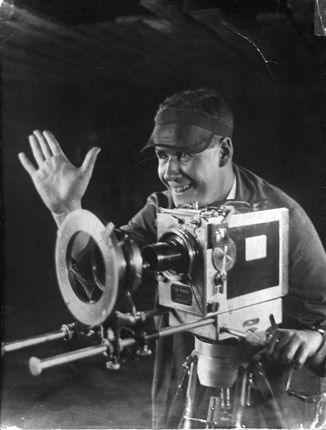
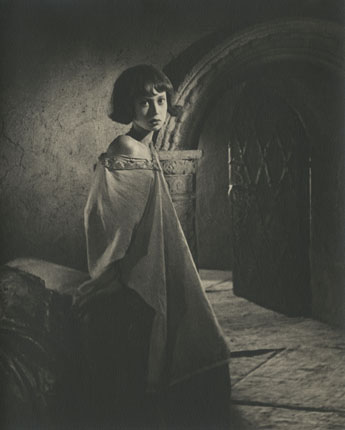
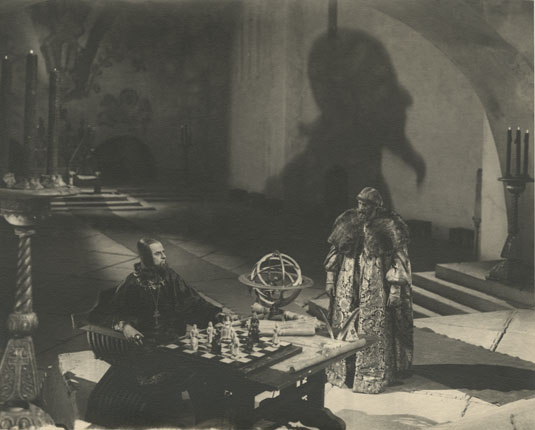
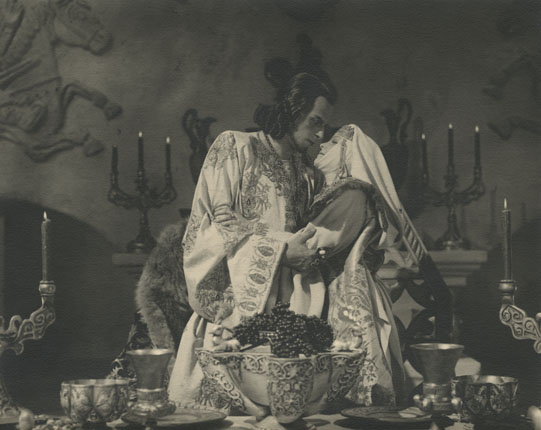

Sergey Eisenshtein on the filming of the movie "Old and new" ("General line"). 1929. Silver-gelatine print. State Central Museum of movie.
Sergey Eisenshtein on the filming of the movie "Old and new" ("General line"). 1929. Silver-gelatine print. State Central Museum of movie.
Erik Pyriev on filming of Sergey Eisenshtein's movie "Ivan the Terrible". 1943-1944. Silver-gelatine print.
Nikolay Cherkasov on filming of Sergey Eisenshtein's movie "Ivan the Terrible" 1943-1944. Silver-gelatine print.
Lyudmila Tselikovskaya and Nikolay Cherkasov on filming of Sergey Eisenshtein's movie "Ivan the Terrible" 1943-1944. Silver-gelatine print.
Sketch of costumes to Vsevolod Mejerhold's performance "House of broken hearts". 1922. Training work. Paper, ink, thread.
Moscow, 24.11.2016—26.03.2017
exhibition is over
Share with friends
Curator: Olga Sviblova, Anna Zaitseva in participation of Kirill As and Nadya Korbut
Scientific consultant: Elena Misalandi
Architecture consultants: Kirill As and Nadya Korbut
Due to celebration of Museums' 20th birthday
For the press
As part of celebrations to mark the 20th anniversary of the museum MAMM presents the exhibition ‘Montage of Attractions’, devoted to the work of Sergei Eisenstein, the great director, artist, screenwriter, pedagogue and author of fundamental texts on film theory. The exhibition is also timed to coincide with 2016 as the Year of Cinema in Russia.
Sergei Eisenstein is a legendary figure in the history of world cinematography. It is impossible to overestimate the influence he exerted on the development of modern cinema, both in Russia and globally. A vast number of books and academic research projects have been dedicated to Eisenstein and he remains one of the most frequently cited directors in the world, while his acclaimed film ‘Battleship Potemkin’ is rightly acknowledged as one of the finest films in history, according to surveys among critics, directors and the general public.
The MAMM exhibition reveals diverse aspects of Eisenstein’s creativity, among them his drawings — from the earliest, which show how vividly he saw the world and its characters even as a child, to the very last pictures — and Eisenstein drew throughout his life. As if in shorthand the sketches made by this genius with encyclopaedic knowledge convey his concepts, both realised and unrealised, his emotional and intellectual musing in relation to world culture as it reflected the history of human civilisation. Also represented in the exhibition are good-natured caricatures of his close friends — of Mikhail Romm (the drawing was completed by Romm himself and signed ‘Partly ruined by M. Romm’), the director Grigory Roshal, the actor Maxim Shtraukh and the cinematographer and photographer Viktor Dombrovsky, as well as numerous self-caricatures.
The exhibit includes sketches of scenery and costumes for theatre productions staged in the 1920s by Sergei Eisenstein himself and other directors, and also costumes for the film ‘Ivan the Terrible’. A special place in the exhibition is assigned to unique artefacts such as the beaded purse and earrings Eisenstein presented to Marianna, the daughter of his friend Grigory Roshal. Eisenstein was a long-standing friend of the Roshal family. The birthdays of Marianna and Sergei Eisenstein were very close, and for many years they held a joint celebration. Later Marianna Roshal studied with Eisenstein and worked as an assistant on the epic film ‘Ivan the Terrible’. Sergei Eisenstein’s gave his last present to Marianna Roshal when he was already seriously ill and unable to walk. He gave this young woman he had known since infancy a beaded pouch with the donor’s inscription ‘Emulate your teacher and never cast pearls’. At the time Eisenstein had problems with the second part of ‘Ivan the Terrible’ and knew that even the Stalin Prize he was awarded for the first part of the film could not save him from censorship of the second.
The exhibition features many photographs relating to the director’s life and work. There are portraits of Sergei Eisenstein by masters of Russian photography such as Alexander Grinberg, Dmitry Debabov and Moisei Nappelbaum; photographs of Eisenstein’s acclaimed plays from the period he worked at Proletkult, images documenting his trip to America and showing Eisenstein with important figures in Russian and world culture, and of course stills from the set of Sergei Eisenstein’s celebrated films ‘Strike’, ‘October’, ‘Battleship Potemkin’, ‘Old and New’, ‘Bezhin Meadow’, ‘Alexander Nevsky’ and ‘Ivan the Terrible’ made by his friends, the cinematographers Viktor Dombrovsky, Boris Frantsisson, Alexander Sigaev and Yakov Tolchan. A series about Sergei Eisenstein’s work on Richard Wagner’s opera ‘Die Walküre’ at the Bolshoi Theatre in 1940 will also be shown at the exhibition.
Also on display are posters for Sergei Eisenstein’s movies, including two by Alexander Rodchenko for the film ‘Battleship Potemkin’. One of Rodchenko’s posters became canonical and multiple copies were printed, but the other was not used for the film’s advertising campaign and only one specimen has survived, created by the artist.
Pride of place in the exhibition is allotted to fragments from Sergei Eisenstein’s films. In ‘Montage of Attractions’, his famous essay from 1923, Eisenstein wrote: ‘An attraction (in our diagnosis of the theatre) is any aggressive moment in theatre, i.e. any element of it that subjects the audience to emotional or psychological influence, verified by experience and mathematically calculated to produce specific emotional shocks in the spectator ... I regard the attraction as being in normal conditions an independent and primary element in structuring the show, a molecular (i.e. compound) unity of the effectiveness of theatre and of theatre as a whole. It is completely analogous to Grosz’s ‘rough sketches’, or the elements of Rodchenko’s photo-illustrations.’ Eisenstein wrote the essay when he was still working in the world of theatre, but here we see a statement of the creative method he would later develop in his cinematography — the ‘montage of attractions’.
The revolutionary theory of a ‘montage of attractions’ is more relevant today than ever before. In an age of increasing information overload, the fight to engage the emotions and thoughts of the spectator is central to each and every artist.
General partners:
General radio partners |
Strategic information partners |
Special media partner
Information partners

